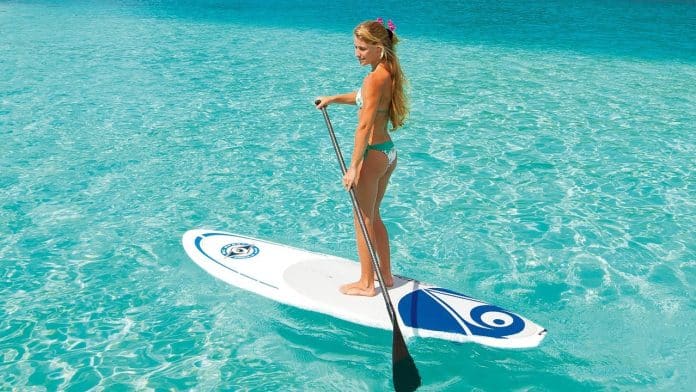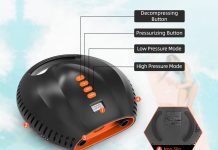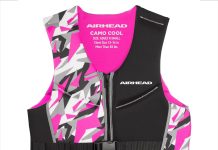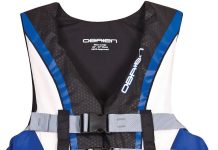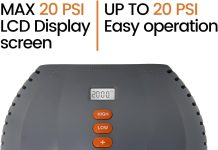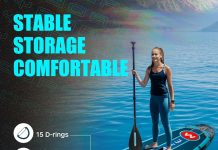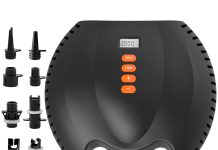Are you lAre you looking to get into stand-up paddleboarding (SUP) but unsure how to choose the right paddle? We’ve got you covered!
In this article, we’ll explore the key factors to consider when selecting a SUP paddle that suits your needs and preferences. From length and blade shape to construction materials, we’ll break down all the essentials so you can confidently paddle your way to an enjoyable SUP experience. Let’s dive in!
Factors to Consider
When it comes to choosing the right SUP paddle, there are several factors that we need to consider. These factors will significantly impact our overall experience on the water and ensure that we have the most enjoyable and efficient paddling experience possible. From paddle length to blade shape, grip to brand reputation, each factor is crucial in selecting the perfect paddle for our needs. Let’s dive deeper into each factor and explore what we must consider when choosing a SUP paddle.
Determining the Right Paddle Length
The length is one of the most important factors when choosing a SUP paddle. The length of the paddle will significantly impact our paddling technique and overall performance on the water. To determine the correct paddle length for us, we need to consider our height and body type, as well as our paddle style and purpose.
Height and Body Type
Our height and body type are crucial in determining the correct paddle length. As a general rule of thumb, the paddle should be about 8-10 inches taller than us. This will ensure we have the proper reach and leverage to paddle efficiently without straining our muscles. Additionally, taller individuals may benefit from a slightly longer paddle to accommodate their height, while shorter individuals may prefer a slightly shorter paddle for better control and maneuverability.
Paddle Style and Purpose
The style of paddling that we plan to do and our intended purpose for using the paddle also influence the length we should choose. For example, suppose we primarily use the paddle for touring and long-distance paddling. In that case, a slightly longer paddle may be more appropriate to give us the necessary power and efficiency. On the other hand, if we are into surfing or racing, a shorter paddle may be preferable for quicker and more agile movements.
Paddle Length Guide
To make things easier, many paddle manufacturers provide a paddle length guide that considers our height, style, and purpose. These guides give us a starting point to determine the ideal paddle length and can be helpful when deciding. However, it’s important to remember that these guides are just a starting point, and personal preference and comfort should ultimately guide our choice.
Understanding Paddle Materials
Another crucial factor to consider when choosing a SUP paddle is the material from which it is made. The paddle material impacts not only the overall weight of the paddle but also its durability, performance, and price. Here are some common paddle materials to be aware of:
Carbon Fiber
Carbon fiber is widely regarded as one of the top choices for paddle materials, particularly among advanced or professional paddlers. Carbon fiber paddles are exceptionally lightweight, which enhances our paddling efficiency and reduces fatigue. They also offer excellent stiffness, translating to efficient power transfer from our stroke to the water. However, carbon fiber paddles are more expensive than other materials.
Fiberglass
Fiberglass is another popular paddle material known for its durability and lightweight. It balances performance and price well, making it an excellent option for paddlers of all skill levels. Fiberglass paddles provide more flex than carbon fiber, which can be more forgiving and more accessible on our joints. While slightly heavier than carbon fiber, fiberglass paddles are considerably lighter than plastic or aluminum alternatives.
Plastic
Plastic paddles are often the most affordable option on the market. They are durable and resistant to impact, making them an excellent choice for beginners or paddlers on a budget. Plastic paddles tend to be heavier than carbon fiber or fiberglass, affecting our paddling efficiency and causing more fatigue. However, they are still perfectly suitable for casual recreational paddling.
Wood
Wood can be an excellent choice for those looking for a more traditional and aesthetically pleasing paddle. Wood paddles offer a unique feel and visual appeal. They are generally heavier than carbon fiber or fiberglass, but they provide a natural flex and shock absorption, making them comfortable and forgiving on our joints. Wood paddles often require more maintenance to protect them from water damage, so proper care is essential.
Choosing the Ideal Paddle Blade Shape
The shape of the paddle blade significantly affects our paddling performance and efficiency. Different blade shapes are designed for various paddling styles and conditions. Choosing a blade shape that matches our needs and preferences is essential. Here are some aspects to consider when selecting the ideal paddle blade shape:
Blade Shape Options
Paddle blade shapes can vary widely, but the two main categories are tear teardrop rectangular shapes. The tearteardroppe, also known as a “tearteardrop “dihedral” shape, has a curved design with the broadest point closer to the blade’s tip. This shape provides a smooth and efficient stroke with less water resistance, making it ideal for long-distance paddling and touring. The rectangular shape, on the other hand, has a broader and more squared-off design. It offers more surface area and power for quick bursts of speed, making it suitable for surfing or racing.
Blade Area
The size of the blade, also known as the blade area, is another critical consideration. It determines the amount of power we can generate with each stroke. Larger blades provide more surface area, which translates to greater power but can lead to more fatigue over time. On the other hand, smaller blades require less energy to move through the water and are easier to control. The ideal blade area depends on our physical fitness, paddling style, and intended purpose.
Blade Materials
Blade materials also play a role in paddle performance. Carbon fiber and fiberglass are commonly used for paddle blades, offering lightweight properties and enhancing power transfer. Plastic blades are also available, which are durable but tend to be heavier. The choice of blade material depends on the balance between weight, performance, and cost.
Paddle Blade Angle
The angle at which the blade is offset from the shaft, known as the blade angle, can affect our stroke efficiency and comfort. A higher blade angle, such as 10-12 degrees, provides a more vertical entry and exit from the water, reducing strain on our shoulders and wrists. A lower blade angle, around 6-8 degrees, offers a more horizontal stroke, which can be advantageous for surfing or maneuvering. The optimal blade angle depends on our paddling style and comfort preferences.
Exploring Paddle Shaft Materials
The material of the paddle shaft, the section that connects the blade to the handle, is another critical factor to consider. Different shaft materials offer varying levels of durability, stiffness, and weight. Here are some common paddle shaft materials:
Aluminum
Aluminum shafts are popular for paddle shafts due to their affordability and durability. They offer an outstanding balance of strength and flex, making them suitable for various paddling styles. However, aluminum shafts tend to be heavier than other materials, which may affect our overall paddling efficiency.
Fiberglass
Fiberglass shafts provide a lightweight and relatively stiff option for paddlers. They offer excellent durability and are resistant to corrosion. Fiberglass shafts are often preferred by those seeking a balance between price, performance, and weight.
Carbon Fiber
Carbon fiber shafts are the lightest and stiffest option available, making them a preferred choice for advanced paddlers or those who prioritize performance. They offer superior power transfer and reduced fatigue during long paddling sessions. However, carbon fiber shafts are more expensive than other materials.
Wood
Wood shafts provide a unique aesthetic appeal while also offering a moderate level of flex. They are generally heavier than other shaft materials but offer a natural feel and shock absorption that can be forgiving on our joints.
Considering Paddle Weight
The paddle’s weight is crucial as it directly affects our paddling experience. A lighter paddle can significantly reduce fatigue and increase efficiency, particularly during long paddling sessions. Several factors contribute to the overall weight of the paddle:
Paddle Materials
The materials used in the construction of the paddle significantly impact its weight. Carbon fiber paddles are known for their lightweight properties, making them a preferred choice for many. Fiberglass paddles are slightly heavier but considerably lighter than plastic or aluminum alternatives.
Paddle Blade Size
The size of the paddle blade also affects its weight. Larger blades tend to be heavier, as they require more construction material. Smaller blades are generally lighter, making them easier to control and maneuver.
Paddle Shaft Weight
The material of the paddle shaft also contributes to the overall weight of the paddle. Carbon fiber shafts are the lightest option, followed by fiberglass and aluminum. Wood shafts tend to be the heaviest.
When choosing a paddle weight, balancing lightness and durability is essential. While a lighter paddle can be advantageous, it should still be strong enough to withstand the demands of our paddling activities.
Importance of Paddle Adjustability
Paddle adjustability refers to the ability to adjust the length of the paddle to suit our needs or share it with others. Adjustable paddles are a popular choice among paddlers due to their versatility. Here are some important considerations when evaluating the importance of paddle adjustability:
Adjustable vs. Fixed-Length Paddles
Fixed-length paddles have a set length that cannot be adjusted. They are often lighter and more rigid. However, they don’t offer the flexibility to adapt to different conditions or share the paddle with others. On the other hand, adjustable paddles allow us to change the length to accommodate our height and the paddle style or to share with different people. They are a more versatile option but may sacrifice some weight and stiffness.
Benefits of Adjustable Paddles
The benefits of adjustable paddles are significant. They allow us to fine-tune the paddle length for touring, surfing, or racing activities. They can also be shared among family or friends with varying heights, eliminating the need for multiple paddles. Adjustable paddles are especially useful for beginners or those exploring different paddling styles.
Drawbacks of Adjustable Paddles
While adjustable paddles offer flexibility, they do come with some drawbacks. They tend to be slightly heavier than fixed-length paddles due to the additional components required for adjustment. The adjustable mechanisms can also add a bit of complexity and durability concerns, so proper maintenance and care are essential.
When considering paddle adjustability, we must evaluate our paddling needs, the frequency of adjustment required, and our willingness to carry slightly more weight for added flexibility.
Comparing Paddle Prices
Paddle prices vary significantly depending on brand, materials, and features. Finding a paddle that fits our budget while still meeting our needs is essential. Here are some aspects to consider when comparing paddle prices:
Budget Considerations
Before beginning our search for a SUP paddle, it’s essential to determine our budget. A specific price range will help narrow the options and make the decision-making more manageable. However, it’s important to remember that a paddle is an investment in our paddling experience, and it’s worth considering spending a bit more for a higher-quality paddle that will provide better performance and durability.
Quality and Durability
The quality and durability of a paddle play a significant role in its price. Paddles made from higher-quality materials like carbon fiber or fiberglass are more expensive due to their superior performance and longevity. Lower-priced paddles made from plastic or aluminum may not offer the same level of performance or durability, but they can still be suitable for recreational or casual paddling.
Brand Influence
The brand of the paddle can also impact its price. Established brands with a strong reputation in the SUP industry may charge a premium for their paddles. While brand recognition can provide some quality assurance, we must consider other factors such as materials, performance, and customer reviews when deciding. Lesser-known brands or newer entrants may offer comparable quality and performance at a more affordable price.
When comparing paddle prices, evaluating the overall value and considering the long-term benefits of investing in a higher-quality paddle that meets our specific needs is essential.
Finding the Right Paddle Grip
The paddle grip is the part of the paddle that our hands hold onto while paddling. It is crucial in comfort, control, and overall paddling experience. Here are some factors to consider when searching for the proper paddle grip:
Ergonomic Grips
Ergonomic grips are designed to provide maximum comfort and support to our hands and wrists. They often have contoured shapes that fit the natural curvature of our hands, reducing hand fatigue and strain. Ergonomic grips can significantly enhance our paddling experience, particularly during long-distance or high-intensity sessions.
Comfortable and Non-Slip Grips
A comfortable grip prevents hand discomfort and blisters during paddle strokes. Look for paddles that offer padded or cushioned grips, which can provide extra comfort. Additionally, non-slip grips are crucial for maintaining control and preventing our hands from slipping off the paddle, especially when it gets wet. Some grips feature textured or rubberized surfaces that offer enhanced grip even in wet conditions.
Personal Preference
Finding the proper paddle grip ultimately comes down to personal preference. Some paddlers prefer a thicker grip for better control, while others prefer a thinner grip for increased paddle sensitivity. We must try different paddle grips and styles to determine what feels most comfortable and natural.
Importance of Reading Paddle Reviews
Reading paddle reviews can provide valuable insights from experts and customers who have tested and evaluated different paddle options. Here are some reasons why reading paddle reviews is essential:
Expert Reviews
Expert reviews offer valuable insights and recommendations from experienced paddlers, instructors, and industry professionals. They often evaluate paddles based on performance, materials, durability, and other essential factors. Expert reviews can provide a well-informed perspective and help guide our decision-making process.
Customer Reviews
Customer reviews provide real-life feedback and opinions from people who have purchased and used different paddle models. They offer insights into paddle performance, durability, comfort, and other practical aspects that may not be evident from product descriptions. Customer reviews can better understand the paddle’s pros and cons, helping us make an informed decision.
Comparing Paddle Options
We can compare options and evaluate their strengths and weaknesses by reading paddle reviews. We can understand how well a paddle performs in various paddling conditions, its durability over time, and its overall value for the price. Reading reviews helps us make a well-rounded assessment and select the paddle that best fits our needs and preferences.
In conclusion, choosing the right SUP paddle requires careful consideration of several factors. The length, material, blade shape, shaft material, weight, adjustability, price, grip, and brand contribute to the paddle experience.
By understanding these factors and their relevance to our specific needs, we can make an informed decision and select a paddle that enhances our paddling enjoyment and allows us to make the most of our time on the water. Don’t forget to read paddle reviews to gather insights and perspectives from experts and fellow paddlers, helping us make a well-rounded decision. Happy paddling!

